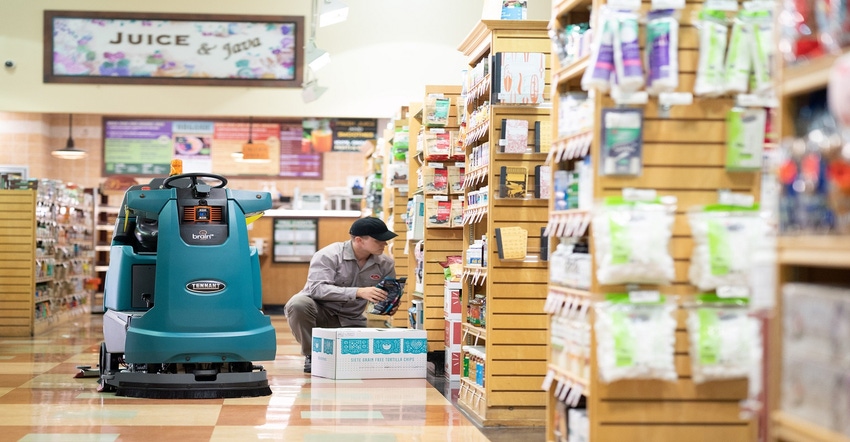Teaching the Robot to Do More Than One Job
Dual-purpose robots bolster efficiency and extend robotics capabilities.
September 14, 2022

In response to the perfect storm of operational headaches and worker shortages these past two years, manufacturers and facility managers have automated at an increasing rate. At the same time, robotics companies have rapidly advanced their products to fulfill a more diverse range of functions.
With fewer feet on the ground, robots are getting deployed to carry out repetitive or dangerous tasks such as cleaning autonomously, freeing up human staff to concentrate on higher-value jobs. In a recent twist, robots that were brought into warehouses and stores as beasts of burden, are starting to offer dual-purpose functionality as real-time data collection devices.
A current example is Brain Corp’s Inventory Scan technology where stock-level checks can be completed by autonomous robotic floor scrubbers. The robots are equipped with sensors and data-delivery systems designed to monitor stock levels while going about their cleaning routes.
We caught up with Michel Spruijt, VP and general manager at Brain Corp., a company that provides software to control and direct mobile robots.
Design News: How did Brain Corp. get involved in running dual-purpose robots?
Michel Spruijt: We worked with facilities to implement our software so they could run the cleaning machines autonomously. We integrated the robots into our operation, and the robots were generating data so you can see what has been cleaned. You can also see how well it was cleaned. Since we were scanning the facility and retrieving data, why not also scan the shelves?
The robot can clean and also run through the store and take pictures of the shelf and deliver feedback on what shelves have missing products, the wrong products, or the wrong pricing. The robots can see how many facings you have. This is just the beginning. You can also add security.

DN: How was this work done in the past?
Michel Spruijt: Shelf scanning used was a separate machine. The job was done by workers with hand scanners. It was all manual labor. One of the challenges companies are facing today is the shortage of labor. That affects how often companies would do the scanning. They aren’t doing it enough. We do the software to do this. We work with robot manufacturers around the world enabling them to clean aisles, scan aisles, and move products
DN: Who are the beneficiaries of duel-purpose robots? Manufacturers? Packaging operations? Warehouses?
Michel Spruijt: All of them. When you do shelf scanning, you can monitor the location of the product. In a warehouse, what you want to see is whether my ERP system is telling me the same story as my physical inventory. This kind of technology started with drums. It’s a logical step to go beyond that to products on the shelves.
DN: How are dual-purpose robots created? By users? By system integrators? By OEMs?
Michel Spruijt: Putting robots in retail facilities involves working around humans. In a warehouse or manufacturing facility, the robot runs into other machines instead of a human. They have to watch out for forklift trucks. There are vision systems and other qualities that can be scanned. In manufacturing, you can use IoT to see if lights are on where nobody is. This optimizes the use of the robot in the environment.
DN: Is this a new idea? Or does this use of robots have a history?
Michel Spruijt: A lot of time ideas are developed by customers. You see one use case after another at client facilities. I’ve seen the craziest ideas from customers. Robots are designed to do only one thing, move products or weld products. Yet they can do more. Cleaning robots were built just for cleaning, but then we realized the machine can do more. It took years for people to realize the robot can monitor shelves since it already has the vision system and data delivery to monitor its own cleaning. We already have a sophisticated navigation system in place.
About the Author(s)
You May Also Like





